Understanding your family connections and ancestry is an enriching experience that bridges the past with the present. One of the most effective ways to visualize and master these connections is through a family tree chart. These family tree diagrams not only provide a clear representation of your lineage but also help in organizing and preserving family history. In this article, we'll explore the importance of family tree charts, different types of charts available, and a family tree generator to help you create your family tree diagram.
Why We Need a Family Tree Chart?
A family tree chart serves as a visual documentation of one's ancestry, tracing familial relationships across multiple generations. This graphic representation of lineage offers a deeper understanding and appreciation of your roots and heritage.
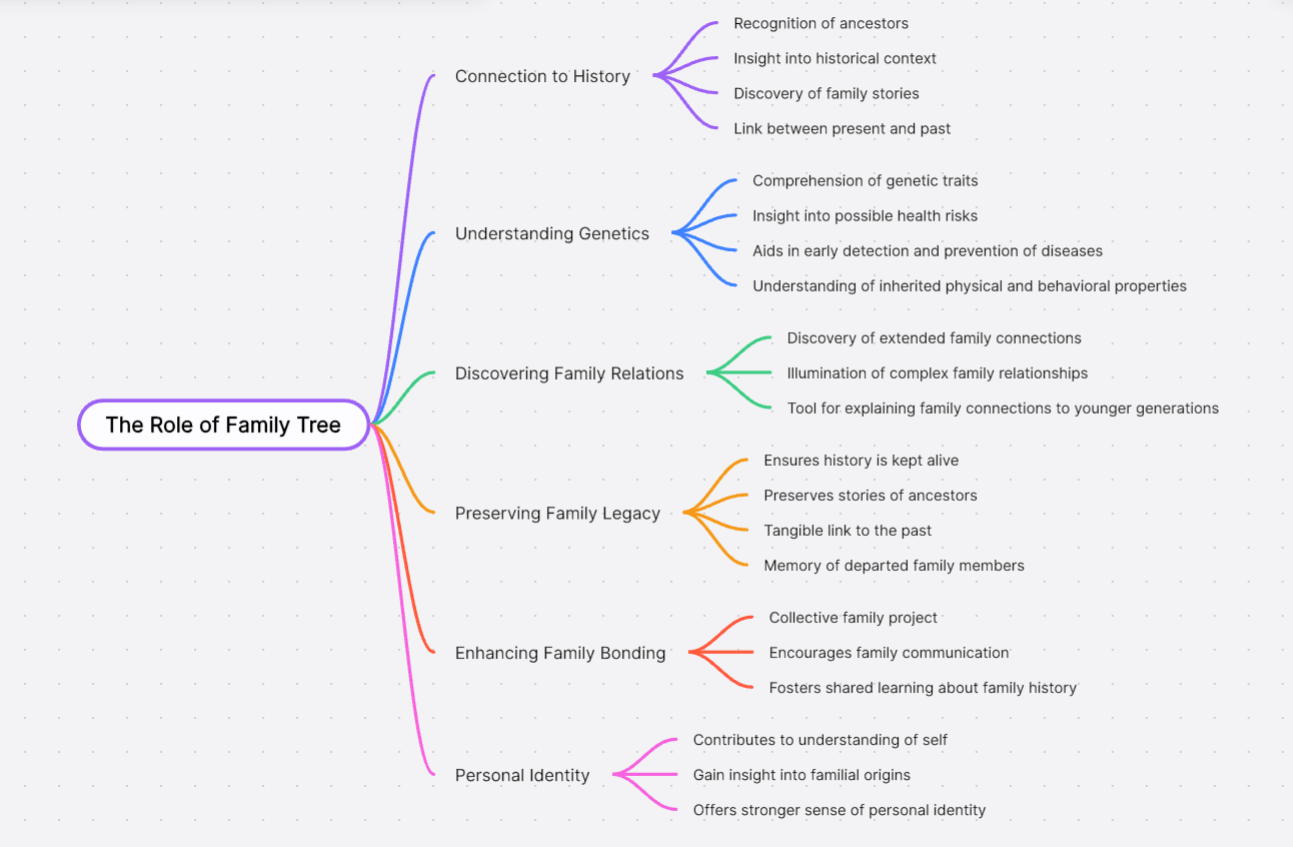
Try Family Tree Chart for Free
Connection to History
A family tree chart connects you to your ancestors, giving you a glimpse into the historical context in which they lived. It helps uncover stories of migration, occupations, achievements, or struggles, forging a link between your present and your past.
Understanding Genetics
Family tree charts can help understand genetic traits and health conditions that may run in your family. This information could be useful for early detection and prevention of certain diseases. It also provides insight into inherited physical traits, talents, and even behavioral patterns.
Discovering Family Relations
Sometimes, extended family members may not even realize how they are connected. A family tree chart illuminates these connections, showcasing the complex web of relationships within a family. It's also a great tool for explaining these relations to younger generations.
Preserving Family Legacy
A family tree chart ensures that the history and stories of your ancestors are preserved for future generations. It acts as a tangible link to the past, keeping the memory of departed family members alive.
Enhancing Family Bonding
The process of creating a family tree can be a collective project that fosters family bonding. Family members can come together to share stories, verify details, and learn more about their shared heritage.
Personal Identity
A family tree chart contributes significantly to one's sense of identity. By understanding where you come from, you gain a stronger understanding of who you are.
In essence, a family tree chart is more than just names and dates; it is a tapestry of life stories interwoven across generations. It encourages a sense of belonging and instills pride in one's lineage and heritage. Whether you're keen on understanding genetics, preserving family legacy, or strengthening family bonds, a family tree chart can serve as an invaluable resource.
Types of Family Tree Charts and Examples
Drawing a family tree is an intricate process that requires not only accurate information but also a suitable chart type to present that information. Here are some popular types of family tree charts you can consider for your genealogy project.
Pedigree Chart
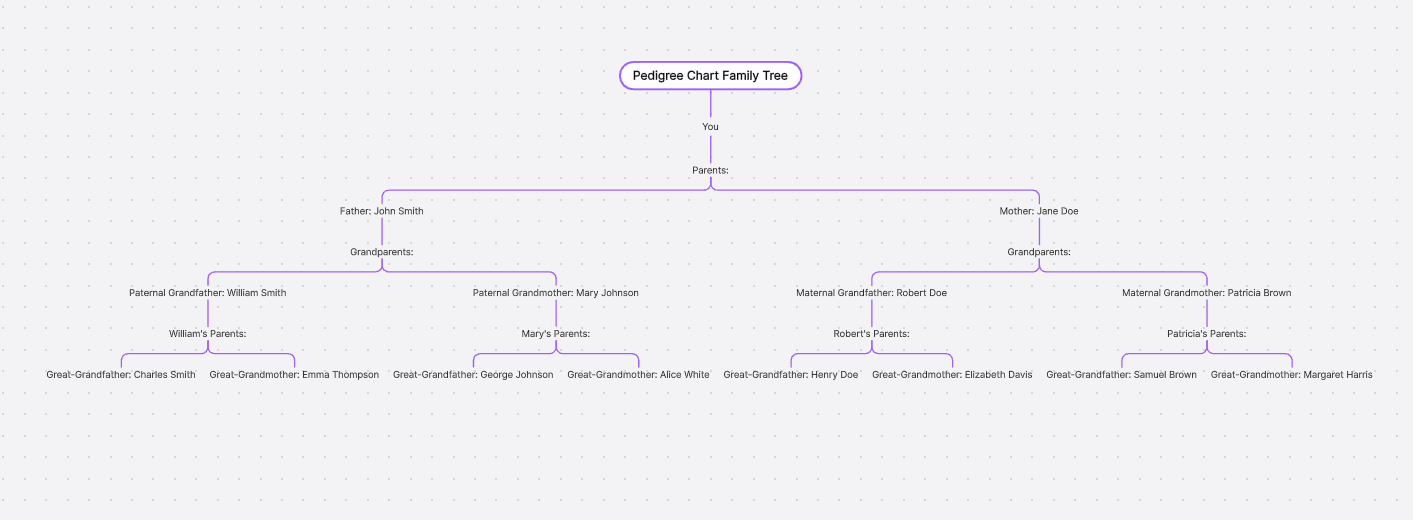
Try Family Tree Chart for Free
The Pedigree Chart is a traditional family tree chart that depicts the direct lineage of an individual. It starts with a single person and branches out to include their ancestors, typically covering about four to five generations. This chart is particularly useful for genetic studies, as it clearly illustrates the parental lines and exposes any recurring traits or diseases.
Descendant Chart
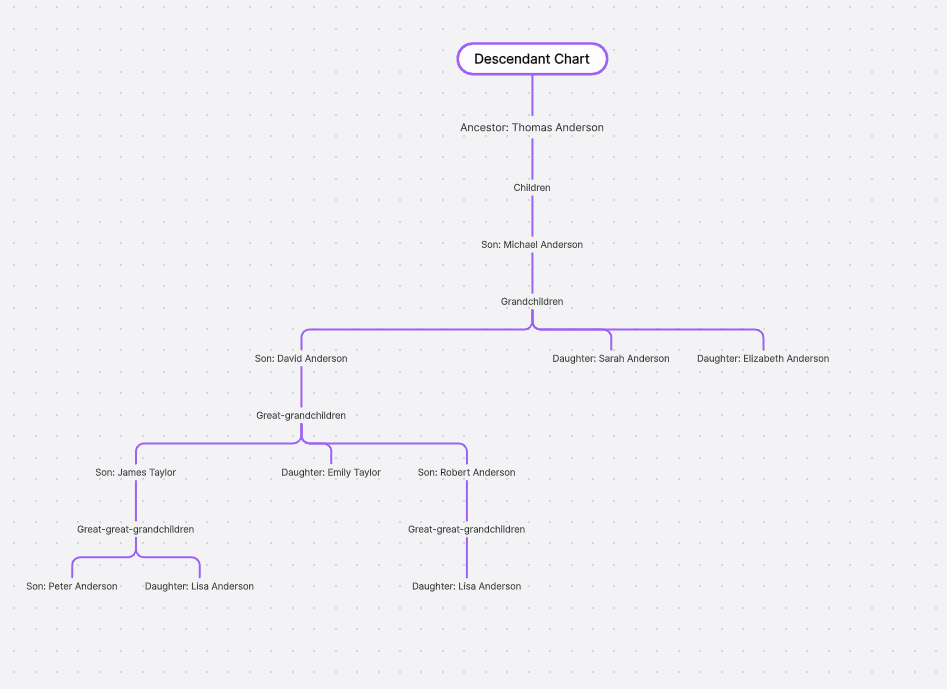
The Descendant Chart flips the perspective of a Pedigree Chart by beginning with an ancestor and documenting all their descendants. This chart is useful for tracing a specific surname or family branch throughout the generations. It includes all children, grandchildren, and so on, giving you a comprehensive look at your extensive family line.
Fan Chart
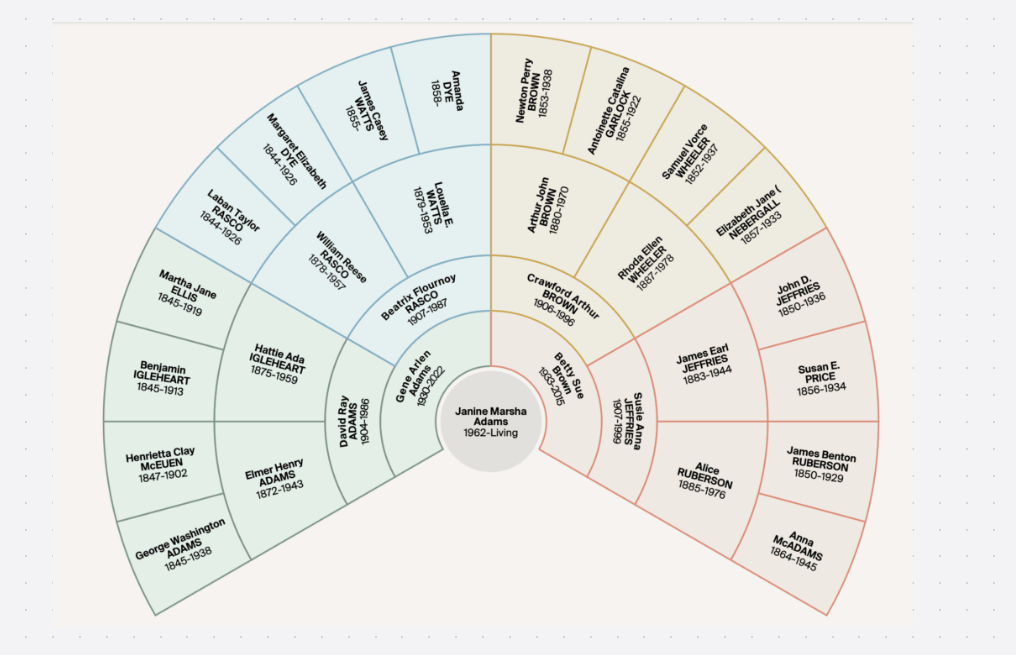
Try Family Tree Chart for Free
The Fan Chart offers a visually attractive way to depict family history. It begins with a single person at the center, with their ancestors or descendants radiating outwards in concentric circles like a fan. It is an excellent choice for displaying numerous generations in a compact and aesthetically pleasing format.
Hourglass Chart
The Hourglass Chart provides a comprehensive view of an individual's lineage by incorporating elements from both the Pedigree and Descendant charts. It places the focus person in the middle with their ancestors above and descendants below, effectively displaying both sides of their family tree.
Family Tree with Photos

Adding photos to your family tree chart can make it more engaging and personal. A Family Tree with Photos aids in visual recognition of family members and helps preserve their memories for future generations. This type of chart turns your genealogical research into a vivid family album, adding an emotional touch to the historical data.
Choosing the right type of family tree chart depends on your unique needs, the kind of data you have, and how you wish to present it. Each chart type provides a different perspective on your family history, enabling you to explore your lineage in diverse and enriching ways.
Family Tree Generator: Boardmix Online Whiteboard
The traditional method of drawing a family tree on paper has evolved into creating interactive and engaging diagrams online now. Boardmix is an intuitive family tree generator that allows users to create and share their family trees seamlessly. It features an easy drag-and-drop interface, customizable templates, and collaboration tools, making it an excellent choice for families who want to work together on their genealogy projects.
Easy-to-Use Interface
Boardmix features a clean, intuitive, and easy-to-navigate interface. This simplifies the process of creating and editing your family tree, making it an enjoyable and hassle-free experience. It allows users of all technical levels to easily start their genealogical journey.
Collaboration Features
Drawing a family tree can be a collective effort involving multiple family members. Boardmix's real-time collaboration feature allows family members from different locations to work together on the same project. They can share insights, verify information, and collaborate in the family tree creation process, thereby fostering familial bonds.
Rich Media Support
A family tree is not just about names and relationships but also about memories and history. Boardmix supports the attachment of photos, videos, documents, and other media directly to your family tree. This helps in preserving and sharing memorable moments and significant records, enhancing the richness of your family history.
Organizational Tools
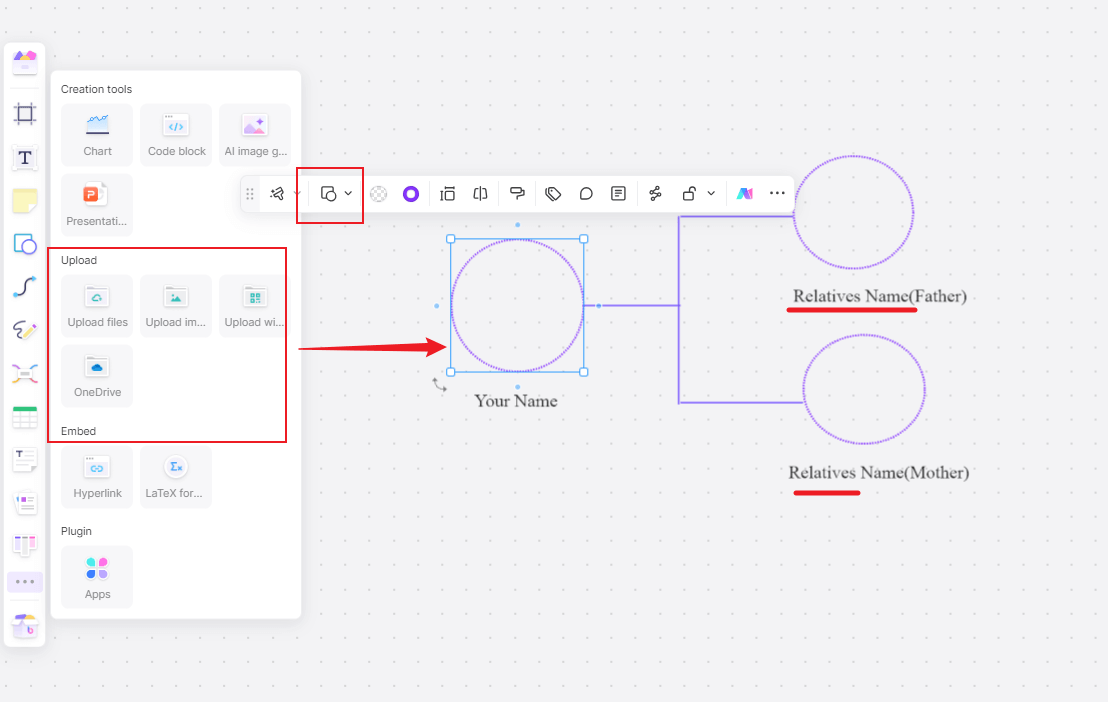
With Boardmix's robust organizational tools, managing vast amounts of data becomes easy. You can neatly categorize and segment information using color codes, tags, or sections, ensuring that your family tree remains well-structured and easy to comprehend.
Accessibility
As an online platform, Boardmix can be accessed anytime and anywhere from various devices. Whether you want to update details or share your family tree with distant relatives, Boardmix's universal accessibility makes it feasible.
Continuous Updates
Boardmix's dynamic nature means your family tree never becomes outdated. With births, deaths, marriages, or any significant event, you can seamlessly update the tree, ensuring it continues to be a living document of your evolving family.
Safe and Secure
Boardmix respects the sensitivity of the information you add and prioritizes data security. It ensures your family data remains private and protected unless you decide to share it with specific people.
How to Make a Family Tree Chart
1. Gather Information
Start by collecting all available information about your family. Speak with relatives, examine old photographs, and consult historical records to gather names, dates, and stories.
2. Choose a Chart Type
Select the type of family tree chart that best suits your needs. Consider the amount of information you have and how you want to display it.
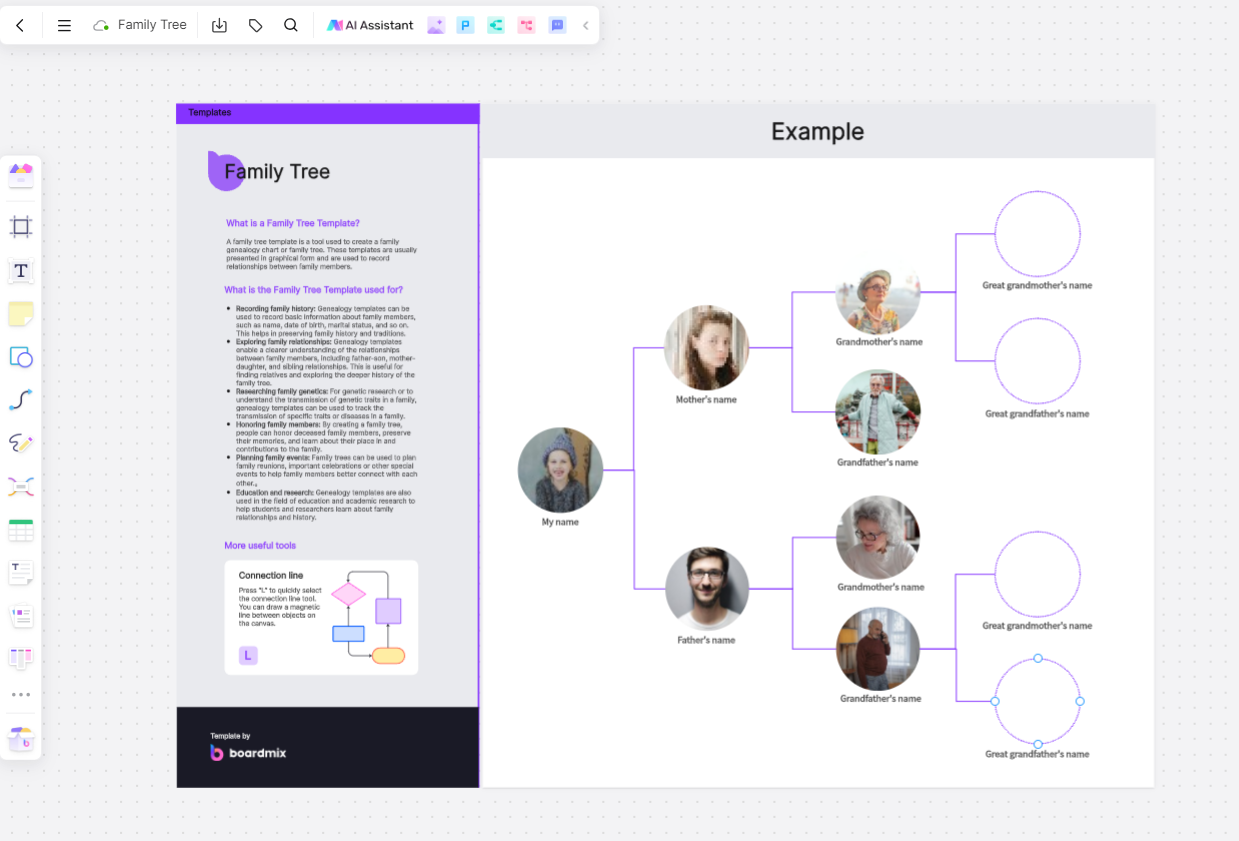
3. Use a Family Tree Maker
Utilize online tools or software designed for creating family tree charts. Websites like Ancestry.com, Boardmix, and FamilySearch offer user-friendly platforms for building detailed and attractive family trees.
4. Input Data
Enter the gathered information into your chosen family tree maker. Start with the basic details and gradually add more information as you verify it.
5. Customize Your Chart
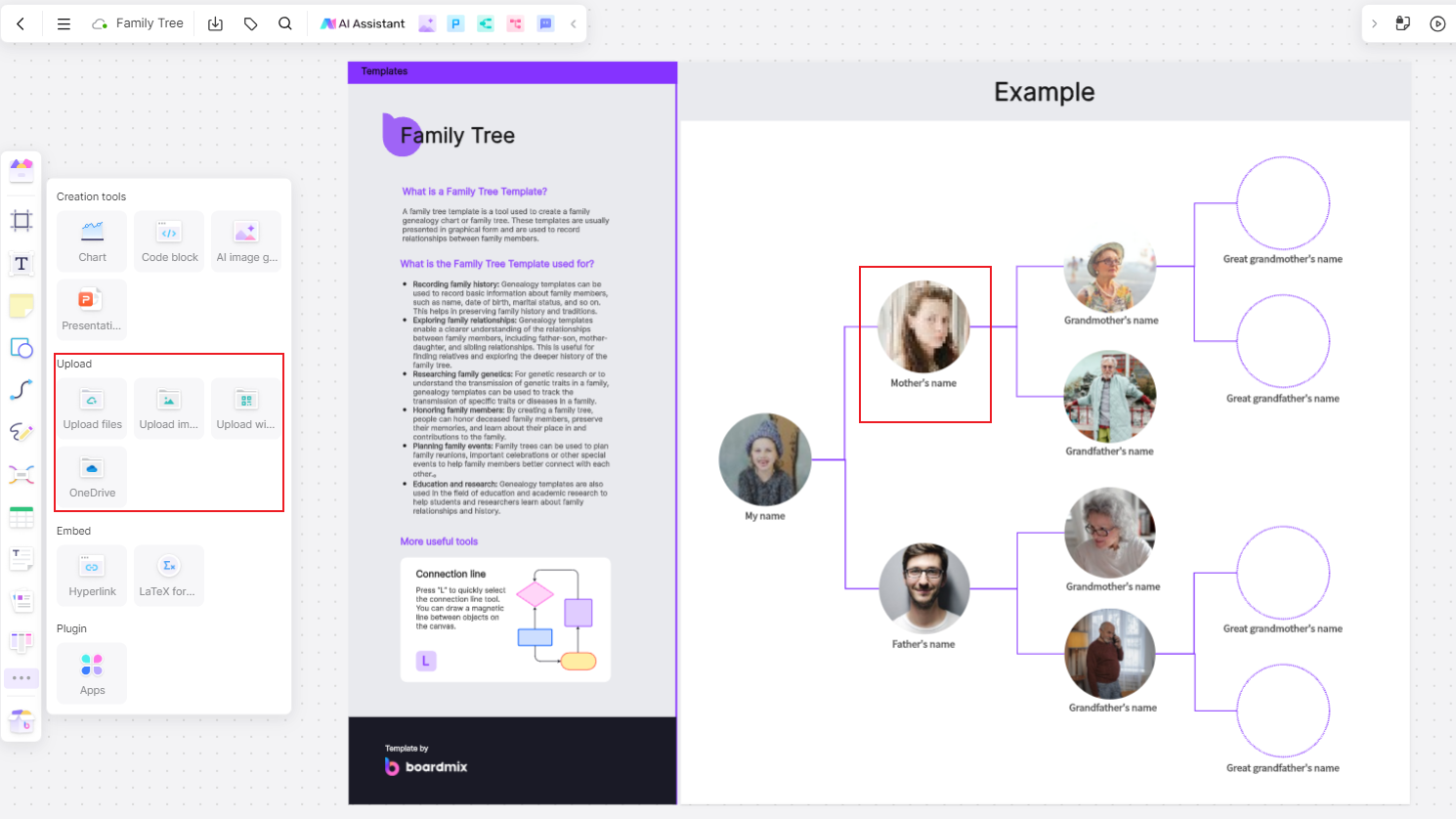
Personalize your chart by adjusting colors, fonts, and layouts. Add photos, stories, and any other details that make your family tree unique.
6. Review and Verify
Ensure the accuracy of the information by cross-referencing with multiple sources. Verify dates, names, and relationships to avoid any errors in your family tree.
7. Save and Share
Once completed, save your family tree chart in a high-resolution format. You can print it for display, share it digitally with family members, or even create a family history book.
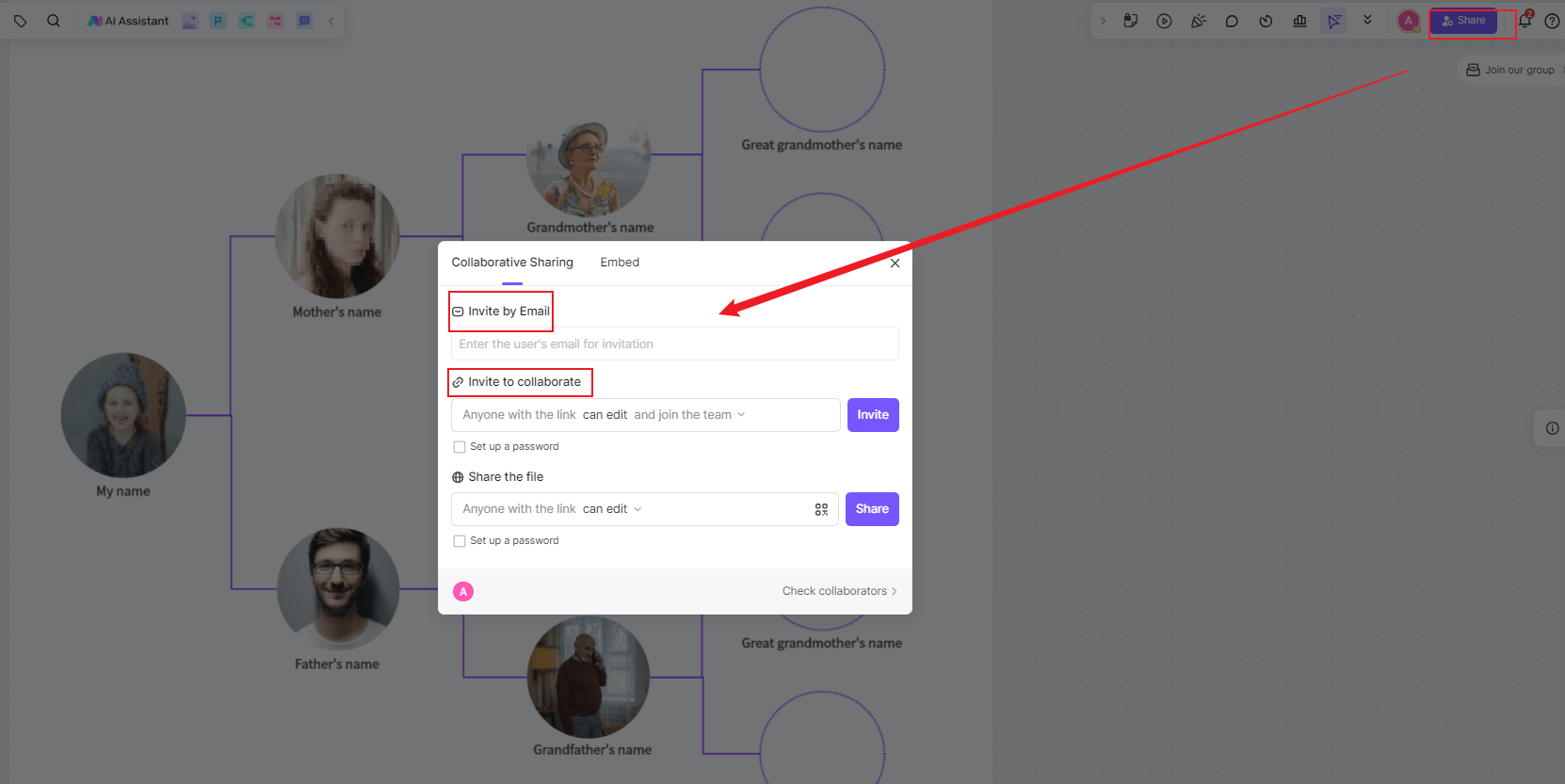
Read: How to Draw a Family Tree Online with Boardmix
Conclusion
A family tree chart is a powerful tool for mastering your family connections and preserving your heritage. Whether you are a novice genealogist or a seasoned researcher, these charts offer a structured and visually appealing way to document your ancestry. By selecting the right type of chart and utilizing a family tree generator like Boardmix, you can create a detailed and beautiful representation of your family's history that will be cherished for generations to come. Start your journey today and discover the rich tapestry of your family's past.








